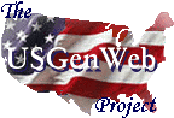from Hesse-Darmstadt. They were living in Sunman by 1870 and their first child, Lewis, was born in Indiana about 1851. The Sunman National Bank building at the corner of Meridian and Washington was originally a very striking building and one of the first to emerge from the 1905 fire. The Bank was established by Dr. Chris Neufarth whose uncle Jacob had a "winegarten" called "Zurn Lustigen Musikanten" in Longworth's Garden of Eden in Cincinnati. Jake played violin there on Sundays. The Charter House on the west-side of Meridian was an early hotel and still has an interesting bar inside. It barely survived the 1905 fire. The home of Ed McMullen on Eastern Ave., the Behlmer-McConnell house on N. Meridan, and Dr. Vincents's home on Western Ave. are among the more substantial brick homes in town. An old fire house is still standing with a steeple to house the fire bell on West Washington, and a group of cozy cottages and bungalows can be found at the end of E. Washington St. The oldest house is the Wolter home on Vine St. with tiny attic windows. The committee is publishing a book containing photographs and descriptions of these Sunman area buidings and businesses. They will be available from the Sunman Sesquicentenial Committee, c/o Sunman Town Hall, Sunman, Indiana 47041. A new museum is also now open weekdays in the Town Hall located in a relatively new bank building on the northside of Town. It contains artifacts of the early Sunman family, displays about the 83rd Regiment and Morgan's Raid, as well as |
displays about German immigration to the Sunman vicinity. David Dreyer, the grandson of Ed Behlmer, will be returning to Indiana from Natchez, MS, for the Sunman Sesquicentennial, and will be giving walking tours Fri - Sat. Sept 1-2. A HOOSIER GERMAN HERITAGE TOUR by Ruth Reichmann Located in the most southwestern corner of the state,New Harmony |
was founded in 1814--before Indiana's statehood(1816). This first all-German settlement of Father George Rapp and his Harmonists from the Enzkreis near Sturrgart is well worth a visit. Be prepared to stay a couple of days in the New Harmony Inn, walk the streets, visit historic hoses and museums, eat in the Red German Restaurant and take in a theater production. For a virtual tour go to http://www.ulib.iupui.edu/kade/newharmony/home.html Oldenburg, the "Village of Spires" with its roots in NW Germany, has a "Corpus Christi" procession every year and in early July celebrates "Freudenfest." Nearby Sunman will be celebrating its Sesquicentennial this year and IGHS is invited to participate in the celebration. (See article elsewhere in this newsletter).In Fort Wayne, "Germanfest" is celebrated June 4-11. While there stop at the IGHS Wyneken Chapter booth. Be sure to also visit the Allen County Historical Museum in the former "City Hall". Envisioned by Mayor Charles E. Muehler and completed by Mayor Charles Zollinger, by some it was called "the most elegant and most economically constructed city hall in Indiana" and by others "the Hapsburg Horror", a gibe at the mayor's Austrian origin. In Nothern Indiana, the area referred to Michiana, is the home to one of the largest Amish areas in the nation. If you want to learn more about the Amish your first stop should be a visit to the Mennohf in Shipshewana with its outstanding multi-media presentation on the history of the Mennonites, Amish and Hutterites. Also of interest are the Amish Acres in Nappanee with an historic farm, restaurants, theater, shops & two country inns. For info http://www.goshen.edu/~lonhs/SamYoder.html . For automobile lovers this area offers much of interest. In the early days of the automobile manufacturing the Hoosier state was a giant. Aproximately 88 Indiana sites and towns manufactured or assembled automobiles. Among them were many of German vintage such as Studebaker, Dusenberg, and Stutz. In South Bend you can visit the Studebaker National Museum and eat at Tippecanoe Place Restaurant, the former Studebaker Mansion. You can also visit the 100 Center, Former Kamm & Schellinger Brewery, in Mishawaka. |
 | Ripley County, INGenWeb Project |  |